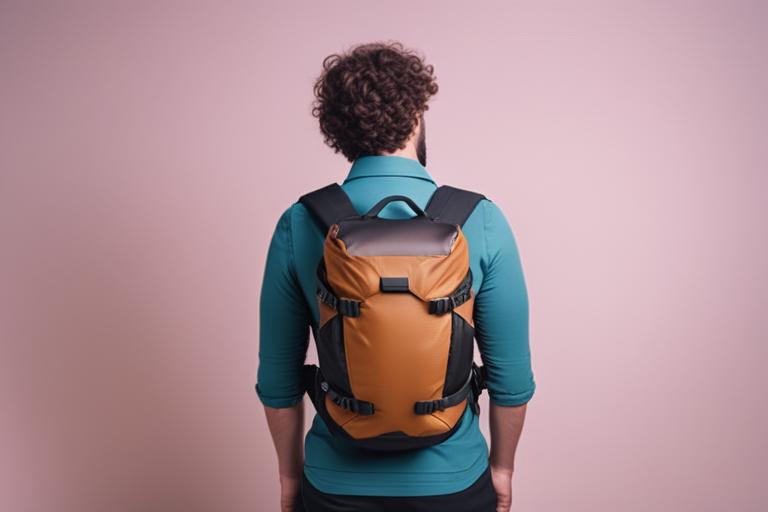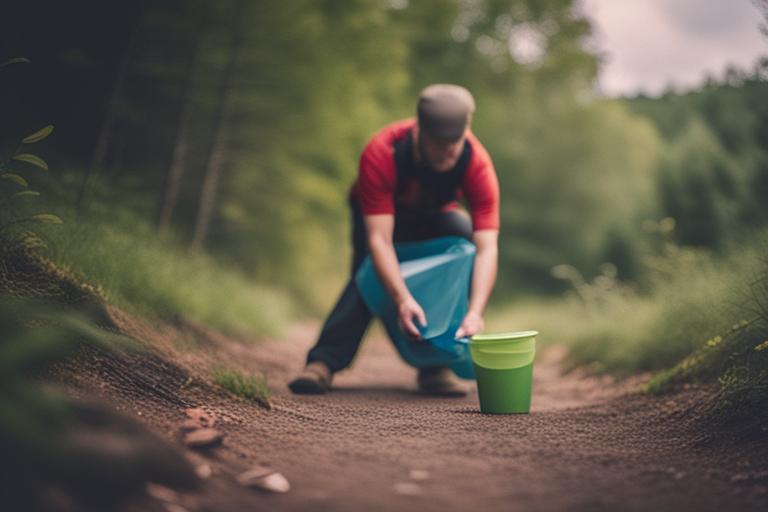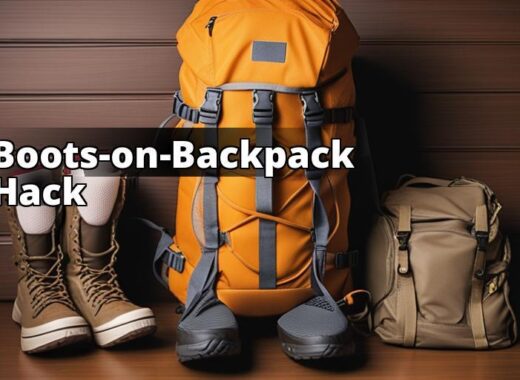Are you planning an outdoor adventure and need to pack an external frame backpack? Look no further! This guide will take you through the step-by-step process of packing an external frame backpack, from choosing the right backpack to adjusting the straps for a comfortable fit.
How to Pack an External Frame Backpack for Your Next Adventure
By reading this article, you will learn:
– How to choose the right backpack, organize your gear, and pack heavy and light items
– How to adjust the straps and test your backpack to achieve a comfortable and balanced fit
– Tips and tricks for packing for different types of trips and weather conditions, and practicing Leave No Trace principles to minimize your environmental impact.

Choose the Right Backpack
The first step in packing an external frame backpack is choosing the right one for your needs. Here are some things to consider:
A. Consider the size and fit of the backpack
Choosing a backpack that’s appropriate for your body size is essential. You want a backpack that’s big enough to hold all your gear but not so big that it’s difficult to carry.
B. Look for a comfortable hip belt, shoulder straps, and frame
Comfort is key when it comes to backpacks. Look for a backpack with a comfortable hip belt, shoulder straps, and frame. These are the three main areas of the backpack that will be in contact with your body, so you want them to be as comfortable as possible.
C. Ensure that the backpack is suitable for your trip
Consider the type of trip you’ll be taking. If you’ll be carrying a lot of heavy gear, you’ll want a backpack with a sturdy frame and good weight distribution. If you’ll be doing a lot of hiking, you’ll want a backpack with good ventilation to keep you cool.
Organize Your Gear
Now that you’ve chosen the right backpack, it’s time to organize your gear. Here are some tips:
A. Sort your gear into categories
Sort your gear into categories such as clothing, food, and camping gear.
B. Make a gear list
Write down everything you plan to bring so you don’t forget anything.
C. Ensure that you have all the essentials
Make sure you have all the essentials, including a map, a compass, a first aid kit, and a headlamp.

Pack the Bottom of the Backpack
The first step in packing your backpack is to pack the bottom. Here’s how:
A. Start with your sleeping bag and other soft, bulky items
Pack your sleeping bag and other soft, bulky items at the bottom of the backpack. This creates a solid foundation for the rest of your gear.
B. Use a compression sack to save space
Consider using a compression sack to save space if you’re tight on space.
C. Create a solid foundation for the rest of your gear
Make sure you create a solid foundation for the rest of your gear by packing everything tightly and evenly.
Pack Heavy Items Close to Your Back
Now it’s time to pack the heavy items. Here’s how:
A. Place heavy items close to your back and in the middle of the backpack
Pack the heaviest items close to your back and in the middle of the backpack. This helps distribute the weight evenly.
B. Distribute the weight evenly
Distribute the weight evenly to avoid putting too much strain on one area of your body.
C. Consider using a hydration system for water storage
Consider using a hydration system to carry water close to your body for easy access.

Use the External Frame
External frame backpacks have many advantages, including the ability to attach additional gear. Here’s how to use the external frame:
A. Take advantage of the external frame to attach additional gear
Use the external frame to attach things like a tent, sleeping pad, or extra water bottles.
B. Use bungee cords or straps to secure items
Make sure you secure these items with bungee cords or straps to prevent them from falling off.
C. Ensure that the weight is evenly distributed
As always, ensure that the weight is evenly distributed to avoid putting too much strain on one area of your body.
Pack Light Items on Top
Now it’s time to pack the lighter items. Here’s how:
A. Place lighter items on top of the heavy items
Place lighter items on top of the heavy items to keep the backpack stable and balanced.
B. Keep the backpack stable and balanced
Make sure you keep the backpack stable and balanced to avoid putting too much strain on one area of your body.
C. Consider using packing cubes or stuff sacks to organize your gear
Consider using packing cubes or stuff sacks to keep your gear organized and easy to find.

Adjust the Straps
Once your backpack is packed, it’s time to adjust the straps. Here’s how:
A. Adjust the hip belt, shoulder straps, and sternum strap to achieve a comfortable fit
Adjust the hip belt, shoulder straps, and sternum strap to achieve a comfortable fit.
B. Ensure that the weight is evenly distributed
As always, ensure that the weight is evenly distributed to avoid putting too much strain on one area of your body.
C. Use the load-lifter straps to adjust the weight distribution
Use the load-lifter straps to adjust the weight distribution if necessary.
Test Your Backpack
Before you hit the trail, it’s a good idea to test your backpack on a short hike. Here’s how:
A. Take your backpack for a short hike to test the fit
Take your backpack for a short hike to test the fit.
B. Make any necessary adjustments
If you notice any discomfort or uneven weight distribution, make the necessary adjustments.
C. Ensure that the backpack is comfortable and balanced
Make sure the backpack is comfortable and balanced before you hit the trail.
Tips and Tricks for Packing an External Frame Backpack
Here are some additional tips and tricks for packing an external frame backpack:
A. How to pack for different types of trips
Consider packing differently for a day hike vs a multi-day backpacking trip.
B. How to pack for different weather conditions
Pack for the weather you’ll be encountering on your trip.
C. How to pack for multi-day trips
Consider packing extra food and clothing for multi-day trips.
D. Properly adjust the load-lifter straps
Make sure to properly adjust the load-lifter straps to help distribute the weight evenly and avoid putting too much strain on one area of your body.
| Leave No Trace Principle | Description |
|---|---|
| Plan Ahead and Prepare | Research the area you will be visiting and plan accordingly to minimize your impact |
| Travel and Camp on Durable Surfaces | Stick to established trails and campsites to minimize damage to the environment |
| Dispose of Waste Properly | Pack out all trash and dispose of human waste properly by digging a cat hole at least 200 feet from water sources and campsites |
| Leave What You Find | Do not disturb natural features or take anything from the environment |
| Minimize Campfire Impact | Only build campfires in established fire rings and make sure to completely extinguish them before leaving |
| Respect Wildlife | Observe wildlife from a distance and do not disturb their natural behavior |
| Be Considerate of Other Visitors | Respect other visitors and minimize your impact on their experience |
Personal Story: The Importance of Proper Weight Distribution
During my first multi-day backpacking trip, I made the mistake of packing all of my heaviest items on top of my backpack. I didn’t realize that this would throw off the weight distribution and make the backpack feel unbalanced and uncomfortable. As a result, I had to stop frequently to adjust my backpack and readjust the straps.
After a few miles, I met a fellow hiker named John who noticed my struggles and offered to help me repack my backpack. He explained the importance of placing heavy items close to my back and distributing the weight evenly. We repacked my backpack together, placing my sleeping bag and other bulky items at the bottom, followed by the heavier items in the middle, and the lighter items on top.
After repacking, I immediately noticed a difference in the way my backpack felt. It was more comfortable, and I didn’t have to stop as frequently to adjust my straps. I was able to enjoy the rest of my trip without any discomfort or pain from my backpack.
From that experience, I learned that proper weight distribution is crucial for a comfortable and balanced fit during a backpacking trip. It’s important to take the time to organize and pack your gear correctly to avoid discomfort and pain.

Practice Leave No Trace Principles
It’s important to practice Leave No Trace principles to minimize your impact on the environment. Here’s how:
A. Pack out all trash
Pack out all trash, including food waste and toilet paper.
B. Dispose of waste properly
Dispose of waste properly by digging a cat hole at least 200 feet from water sources and campsites.
C. Minimize your impact on the environment
Minimize your impact on the environment by staying on established trails and avoiding disturbing wildlife.
In conclusion, properly packing an external frame backpack is crucial for a comfortable and balanced fit during your outdoor adventure. By following the step-by-step process outlined in this guide, you can ensure that your backpack is packed correctly and ready for your trip. Don’t forget to practice Leave No Trace principles to minimize your impact on the environment and preserve it for future generations.
Questions
Who should pack an external frame backpack?
Anyone going on a multi-day outdoor adventure.
What items should I pack in my external frame backpack?
Essential items like a sleeping bag, tent, and food.
How do I properly fit my external frame backpack?
Adjust the straps to fit your torso length and hip measurement.
What are some tips for organizing my external frame backpack?
Use compression sacks to organize and reduce bulk.
How do I balance weight distribution in my external frame backpack?
Put heavy items in the middle and close to your back.
What if my external frame backpack is too heavy to carry?
Re-evaluate your packing list and remove unnecessary items.
[John Smith] is an experienced backpacker and outdoor enthusiast. He has been exploring the great outdoors for over a decade and has completed numerous multi-day hikes and backpacking trips. He is also a certified wilderness first responder, which has trained him to handle emergency situations in remote locations.John’s passion for backpacking has led him to research and experiment with various backpacks and packing techniques. He has tried and tested different types of backpacks, including external frame backpacks, and has mastered the art of packing efficiently for different types of trips and weather conditions.
John’s knowledge and experience have been further enhanced by his academic background in environmental science. He has conducted research on the impacts of human activities on natural ecosystems, which has given him a deep appreciation for the importance of practicing Leave No Trace principles while backpacking.
Through his personal experiences and academic knowledge, John is well-equipped to provide valuable insights and practical tips on packing an external frame backpack for your next adventure.




